Study Guide Chapter 21 !!
1/8
There's no tags or description
Looks like no tags are added yet.
Name | Mastery | Learn | Test | Matching | Spaced |
|---|
No study sessions yet.
9 Terms
Budget Constraint
A budget constraint represents all the combinations of goods and services for a buyer on a budget.
It helps illustrate trade-offs — if you spend more on one good, you have less to spend on another.
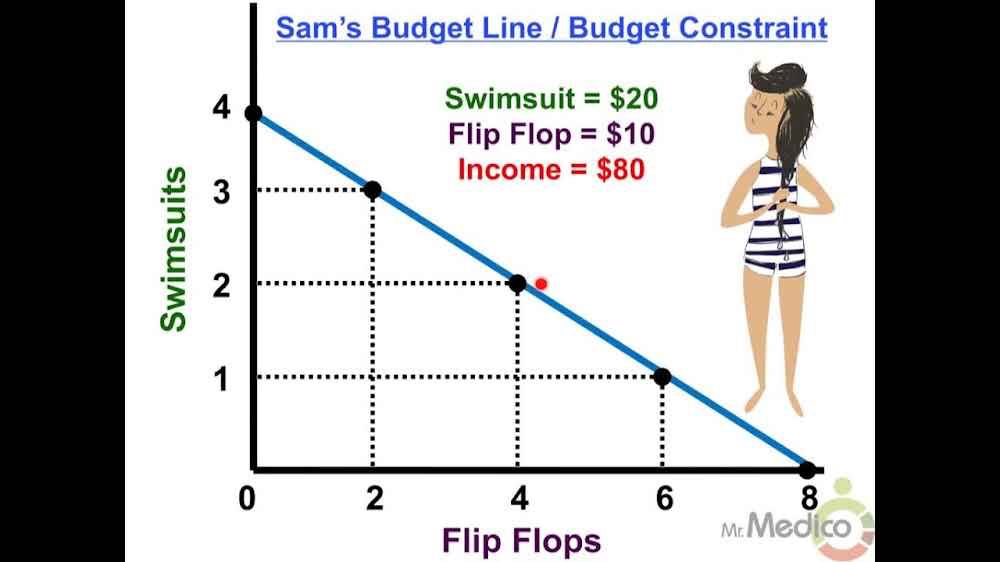
How would a budget constraint be impacted by the following?
An increase in income
The budget constraint shifts outward (to the right)
The consumer can now afford more of both goods.
How would a budget constraint be impacted by the following?
If the price of one of the goods increased
The budget constraint pivots inward on the axis of that good
The consumer can now afford less of that good.
How would a budget constraint be impacted by the following?
If the prices of both goods decreased by 10%
The budget constraint shifts outward (away from the origin)
Since both goods are cheaper, the consumer can afford more of both, even with the same income.
The Indifference curve
represents all the combinations of two goods that give a consumer the same level of satisfaction or utility — meaning, the consumer is indifferent between them.
Indiffernece curve properties
Higher curves are preferred
| More of both goods = more happiness
Curves slope downward
| Trade-offs: more of one = less of the other
Curves do not cross
| Preferences are consistent — no overlap
Curves are bowed inward
| Diminishing marginal utility — variety is better
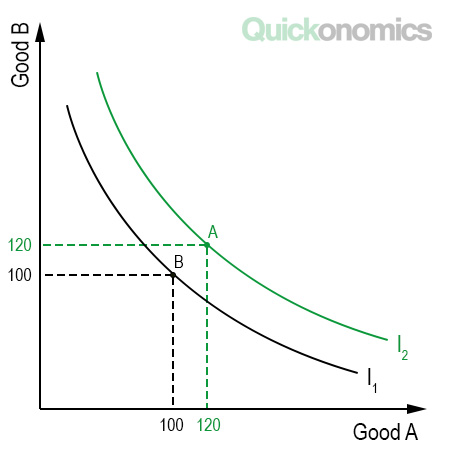
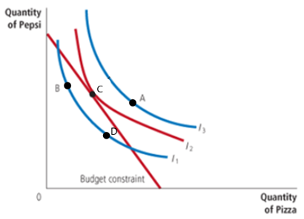
What is the most preferred point? Why?
Point A is the most preferred because it lies on the highest indifference curve (I₃).
📈 A higher indifference curve means a higher level of utility (more satisfaction), so the consumer prefers bundles on I₃ over those on I₂ or I₁.
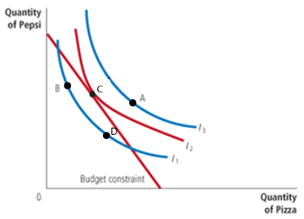
b. Why would this person be equally happy at points B and D?
✅ Points B and D lie on the same indifference curve (I₁).
🙂 Since all combinations on a single indifference curve provide the same level of satisfaction, the consumer is indifferent between them.
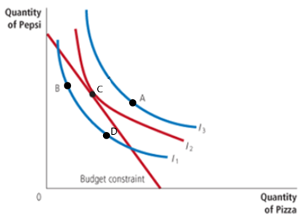
c. What is the optimal consumption point? Why?
✅ Point C is the optimal consumption point because it is where the budget constraint touches the highest possible indifference curve (I₂).
🎯 This is the best affordable option — it maximizes utility while staying within the budget.